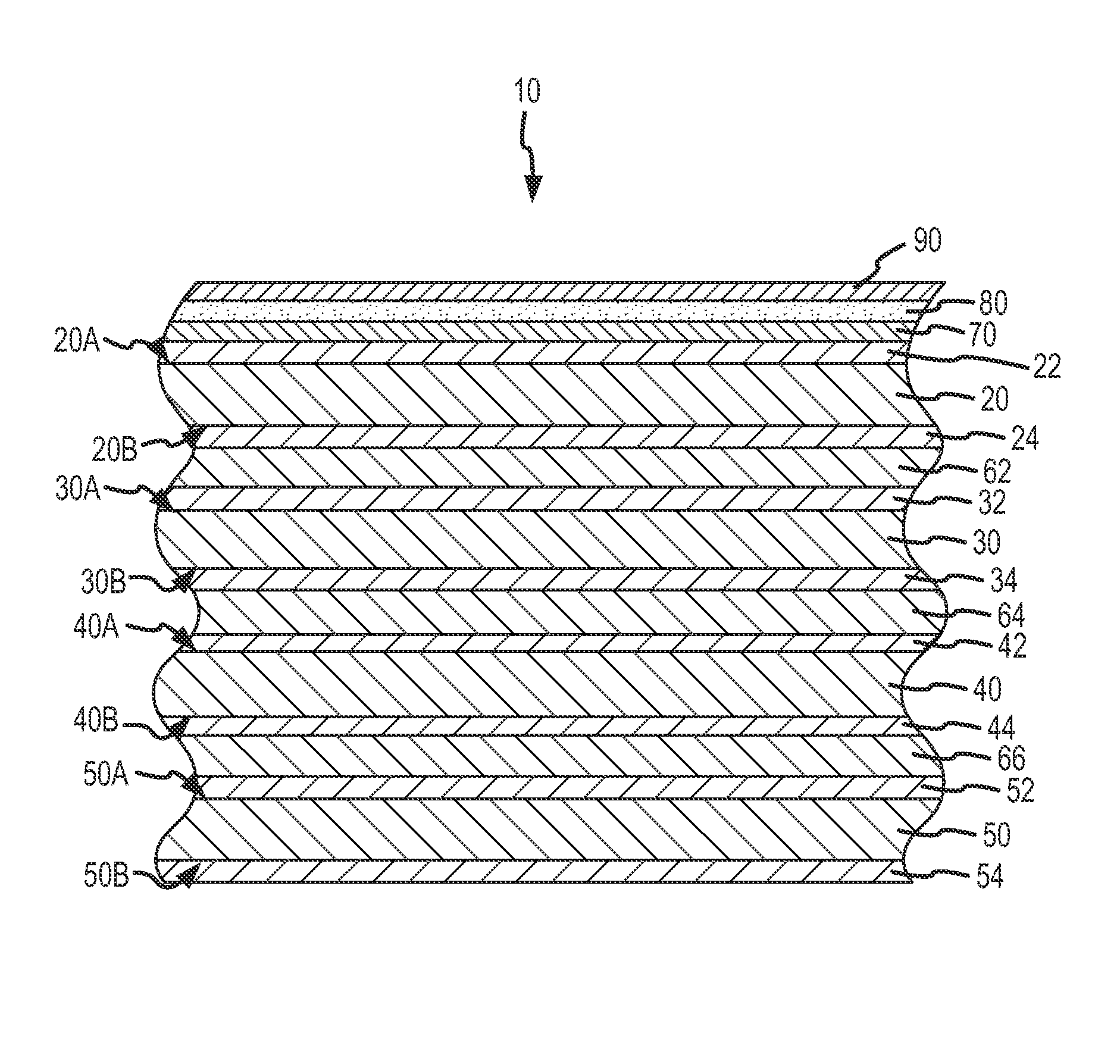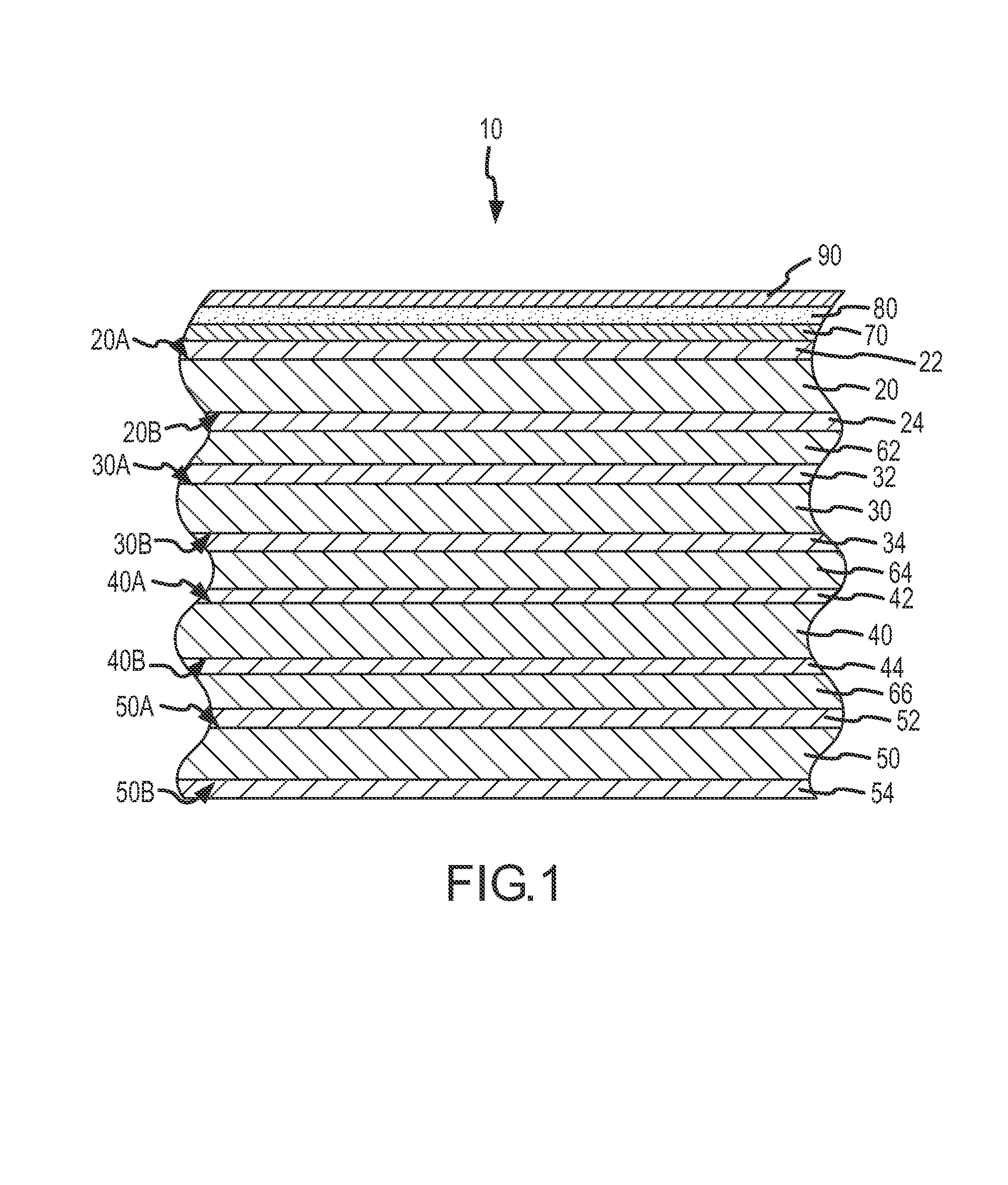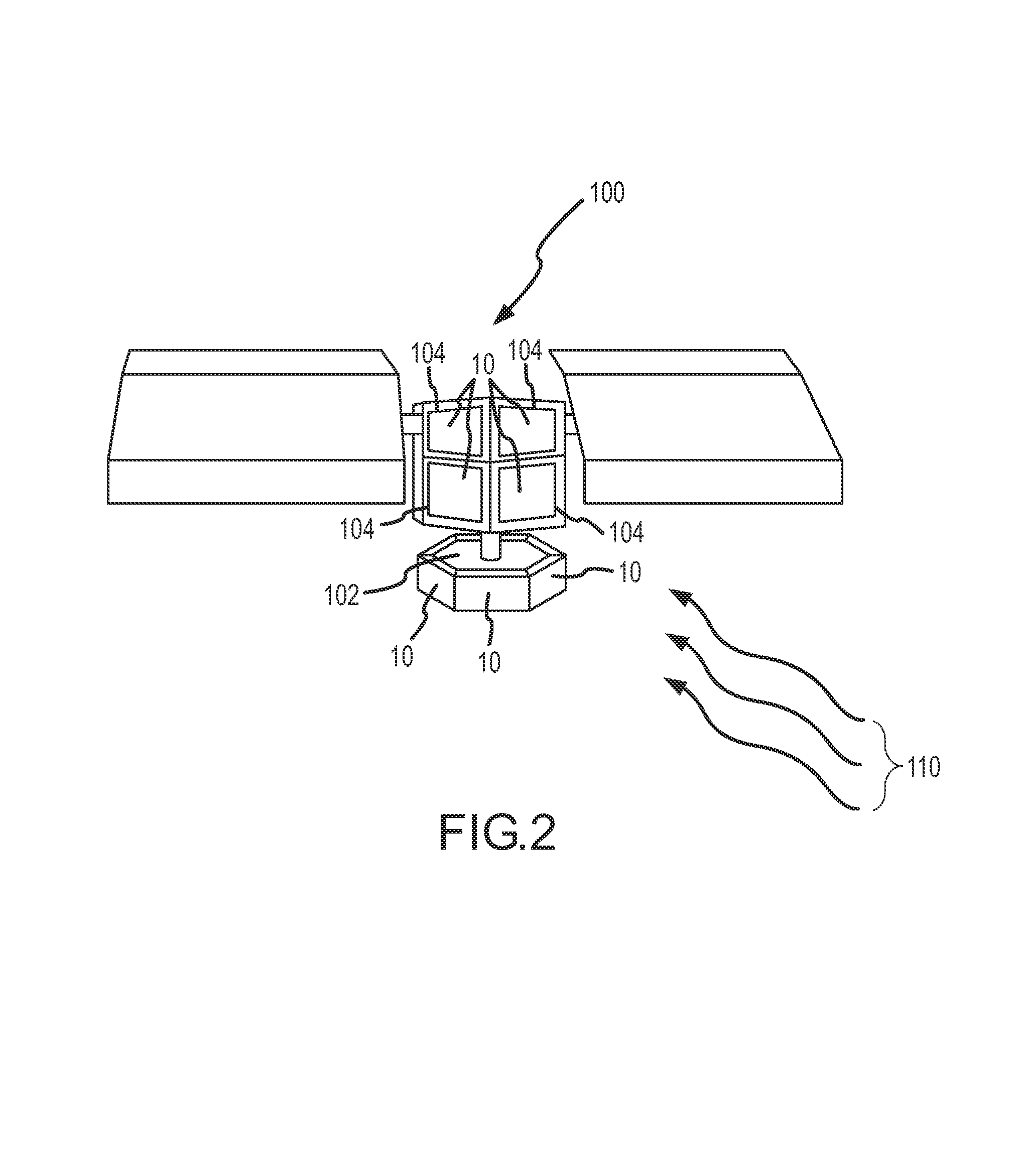Anti-contamination coated multi-layer insulation
- Summary
- Abstract
- Description
- Claims
- Application Information
AI Technical Summary
Benefits of technology
Problems solved by technology
Method used
Image
Examples
example 1
[0026]In this first example, a thin layer TiO2 (photocatalyst, 2˜40 nm) was coated on a TQCM surface, and organic contaminants were then deposited on the TQCM sensor with or without UV radiation. The deposition rate of the organics was monitored by recording the frequency change (i.e., mass change) of TQCM sensors. FIG. 3 shows typical TQCM results. As seen in FIG. 3, the rate of organics deposition on TiO2-coated surface was significantly lower compared to that at the plain TQCM surface under UV radiation. These results suggested that TiO2 coatings are effective in preventing organic residues, which are further supported by the fact that a significant increase in deposition rate was observed when no UV radiation was applied. In addition, the experiments also demonstrated that pre-deposited organic films on TiO2 surfaces can be partially removed under UV illumination (FIG. 4). In this case, frequency decrease at the TiO2-coated TQCM sensor with a thin organic film was observed upon ...
example 2
[0027]In this example, a thin layer of WO3 (i.e., less than 200 nm in thickness) was coated on a quartz substrate, and organic contaminates (dioctyl phthalate) were then pre-deposited on the WO3 surface. The test sample was then placed in an ultrahigh vacuum chamber (UHV, 10−1˜10−10 torr) and radiated with UV light. Mass spectrometry was used to detect potential decomposition products of the organic contaminants. For photocatalytic processes, one of the decomposition products is carbon dioxide (CO2). The graph of FIG. 5 shows CO2 response as a function of UV radiation time. Here, the circles denote a WO3 sample exposed to UV radiation at 9×10−10 torr. The triangles denote background condition (no sample) before WO3 UV exposure. The squares denote background condition (no sample) after WO3 UV exposure. As is seen in FIG. 5, a significant increase in CO2 signal was observed compared to the background signal when the test sample was exposed to UV radiation. This demonstrates the occurr...
example 3
[0028]In this example, a thin layer of ZnO (i.e., less than 200 nm in thickness) was coated on a quartz substrate, and organic contaminates (dioctyl phthalate) were then pre-deposited on the ZnO surface. The sample was then placed in an ultrahigh vacuum chamber (UHV, 10−10˜10−11 torr) and radiated with UV light. Mass spectrometry was used to detect potential decomposition products of the organic contaminants. For photocatalytic processes, one of the decomposition products is carbon dioxide (CO2). FIG. 6 shows CO2 response as a function of UV radiation time. Here, the circles denote a ZnO sample exposed to UV radiation at 8×10−10 torr. The triangles denote background condition (no sample) before ZnO UV exposure. The squares denote background condition (no sample) after ZnO UV exposure. As is seen in FIG. 6, significant increase in CO2 signal was observed compared to the background signal when the sample was exposed to UV radiation. This demonstrates the occurrence of photocatalytic p...
PUM
| Property | Measurement | Unit |
|---|---|---|
| Current | aaaaa | aaaaa |
| Nanoscale particle size | aaaaa | aaaaa |
| Electrical conductivity | aaaaa | aaaaa |
Abstract
Description
Claims
Application Information
 Login to View More
Login to View More - R&D
- Intellectual Property
- Life Sciences
- Materials
- Tech Scout
- Unparalleled Data Quality
- Higher Quality Content
- 60% Fewer Hallucinations
Browse by: Latest US Patents, China's latest patents, Technical Efficacy Thesaurus, Application Domain, Technology Topic, Popular Technical Reports.
© 2025 PatSnap. All rights reserved.Legal|Privacy policy|Modern Slavery Act Transparency Statement|Sitemap|About US| Contact US: help@patsnap.com



